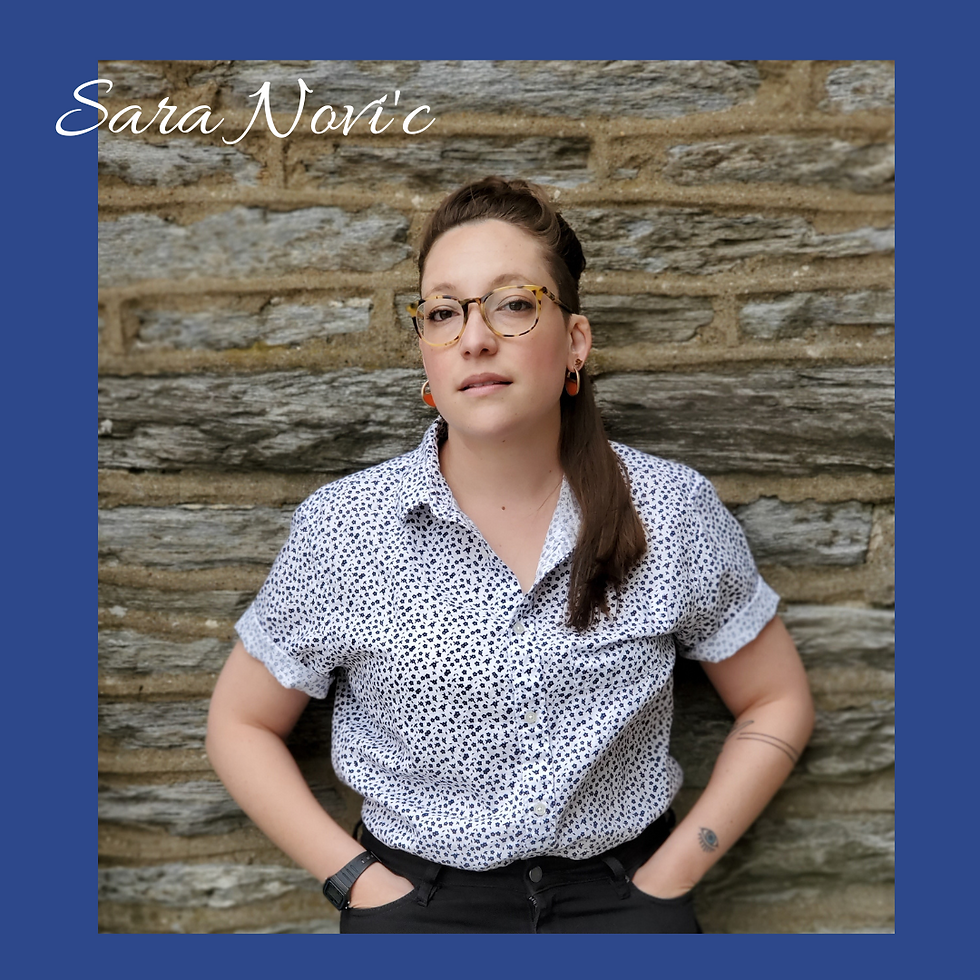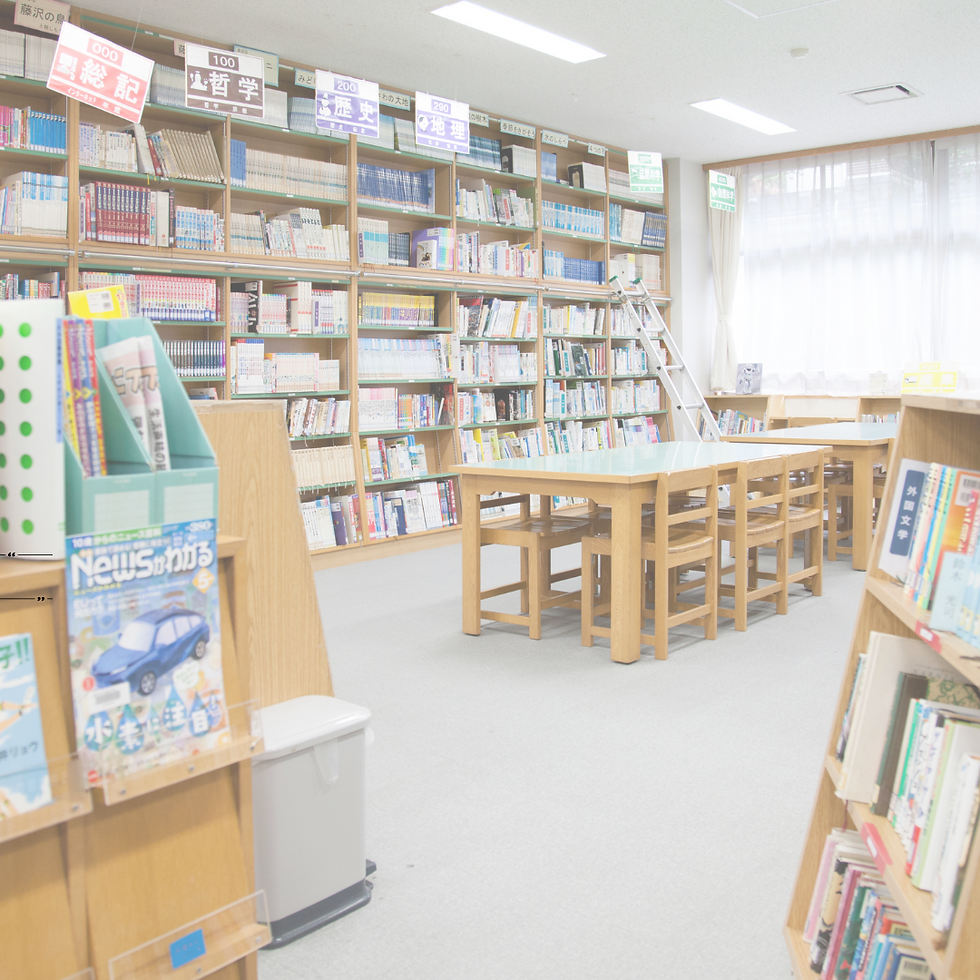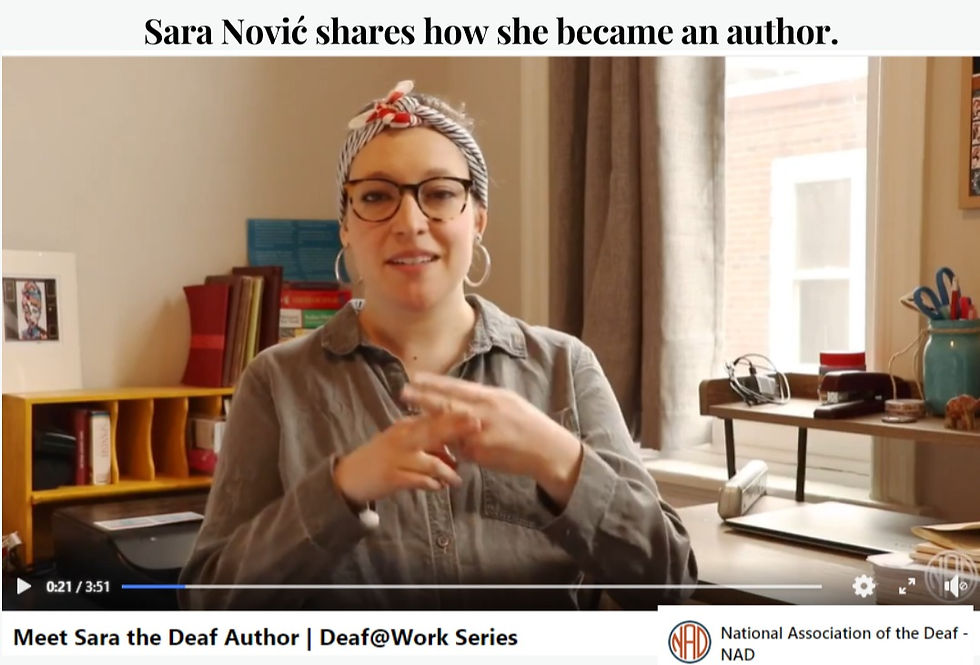NEW YORK TIMES BESTSELLER: Sara Nović and the Representation of Deafness
- Kathleen Marcath

- Aug 7, 2022
- 5 min read
Updated: Oct 12, 2022
by Kathleen Marcath
Covid challenged us all to hear the voice muffled behind a mask where there are no lips to read and fewer expressions to see. How is it that a mask would affect one's ability to hear? In the five parameters of sign language, the non-manual markers are key to specific expression. I think we all read lips and facial expressions more than we realize. This thought made me want to understand more about how a Deaf person experiences the world. And this is what led me to discover the enthralling prose of Deaf author Sara Nović.

Sara is the author of Girl at War, an enthralling page-turner with a brilliantly read audiobook version. Her writing is gripping, and her emotions are conveyed with a unique depth. This is not a novel for a child to read. Sara holds back nothing in the vivid descriptions of the atrocity of war. In her latest novel, True Biz, Sara weaves the lives of the Deaf, the hearing, their challenges, struggles, and even secrets. Life in a residential school for the Deaf with family dynamics can get complicated and messy. Sara fearlessly tackles the issues of life in true form.
True Biz "For those who loved the Oscar-winning film CODA, a boarding school for deaf students is the setting for a kaleidoscope of experiences."—The Washington Post
I wondered, how does Sara Nović use the English language so expertly? In a conversation with the Guardian, Sara shares,
"Books have always provided me with a sense of solace and companionship when I found the hearing world overwhelming. Growing up, I filled notebooks with the things I was afraid to say aloud. Libraries, too, seem designed for me – a place where one isn't supposed to talk, equality under the rule of silence."

She spent hours silently alone, connecting with the world through books, where she found a place to belong, exactly as she is and as she is not. Her heart was earnestly seeking to be heard and to give voice to the silent. Sara has worked diligently to silence the critics that might suggest writing would not be an area of success for her.
In finding her voice, Sara, like Raymond Antrobus, had to get real with herself and her deafness. There was a period of struggling against the language. In her Guardian interview, Sara echoes James Baldwin's feelings that the English language never reflected his own experience until he realized that he had never attempted to use it, but only learned to imitate it. When looking to her biggest literary influences, Sara says, "I can look at the successes of these literary giants and extract a hope that English, with a little work, can carry the Deaf voice, too."
This struggle with language also happened with sign language. As Sara says,
"Even when I was unwittingly fighting against it: I would not have become a writer without ASL. For some, this seems counterintuitive since I write in English. But language bears more than the work of communicating with the mainstream world; it is also the internal vehicle for our thoughts and feelings, the mechanism through which we understand ourselves. Without first having had ASL, I would not have understood myself as a person with a story to tell."
When it comes to the acquisition of spoken language, the age at which hearing loss occurs can make a tremendous difference. If a child has had the experience of hearing and discerning sounds they have a better chance of imitating clear English pronunciation. Learning both modalities of language (spoken and signed) takes far more energy for a deaf student than for a hearing person. Sara experienced a gradual hearing loss. She was in a mainstream classroom taught in spoken English. As her hearing lessened, she learned ASL and was provided with interpreters.
Communicating in spoken English is not her first choice: Sara shares, "When given the choice between the two, my preference is by far for ASL, in which at least I do not feel self-conscious.” Explaining this self-consciousness when having to use her speaking voice, Sara says,
"So far, I have read in public only three times, each distressing in the regular ways (an audience!), with the added terror of exposing an increasingly unknowable part of myself – my voice. I can feel my words in my chest and mouth, but I can't be sure of what they sound like out in the world."
Given the choice, Sara would choose ASL to communicate. This makes me wonder why the hearing world seeks to make the Deaf community conform to its parameters when ASL offers a wealth of new possibilities. I, for one, marvel at the Deaf person's ability to see behind the surface of spoken words. I am reminded of the song "Silence is Golden" by the Tremeloes: "Silence is golden, but my eyes still see." In silence, much is seen, heard, and felt. If we can learn anything from the Deaf community, it's how to listen wholly with one's eyes to understand what our ears do not hear.
I join Sara in hoping that the representation of ASL becomes a new normal. In her words,
"Deaf and disability inclusion isn't a box to be ticked off an equity checklist – it's a state of constant progress. It's my hope that the current increase in representation will not be viewed as a fad or a 'moment' for deaf people, but the new normal."
ASL Picture Books, along with many other authors, teachers, parents, Codas, and organizations, understand the importance of the representation of children in their spaces, cultures, ethnicities, abilities, and perceived disabilities. Our differences are unique. Not one soul is less or more than another. Each and every person has a story to tell, so long as they are empowered to find the truth of their identity.
Silence is golden, but the eyes still see. What do you see?

Author Sara Nović holds a Master's in Fine Arts, MFA, from Columbia University, where she studied fiction and literary translation. Her first novel, Girl at War, won the American Library Association's Alex Award and was a finalist for the Los Angeles Times Book Prize. She is an instructor of Deaf studies and creative writing and lives in Philadelphia with her family. Girl at War is translated into 13 languages.
Thank you, we hope you were inspired!
You may also enjoy:
Every child has a gift to give
ASL Picture Books is helping them discover it.

American Sign Language is a beautiful and powerful language, an untapped resource with limitless potential.
Your feedback is appreciated.
.jpg)







Comments